Practicing Pilates before, during and after pregnancy is a safe and effective method for building and maintaining core and pelvic floor strength amidst many changes in the body. Studies have shown that exercising during pregnancy leads to reduced weight gain, reduced risk of health issues, improved mood and faster labors.
PRENATAL
A great time to start developing core strength and awareness through a Pilates practice is prior to pregnancy. Beginning your practice early will help anchor you during and after your pregnancy.
However, if you are pregnant now and do not have an established Pilates practice, our Trainers are still capable of meeting you where you are to help you build a foundation to build upon.
Regardless of your history with Pilates, our Trainers can help you find benefits like core strength, a stronger pelvic floor, improved circulation, more energy, better posture and thus overall, fewer aches and pains. Your Pilates Trainer will provide modifications to guide you throughout each stage of your journey. You can find an introduction to those modifications and common pregnancy support exercises below.
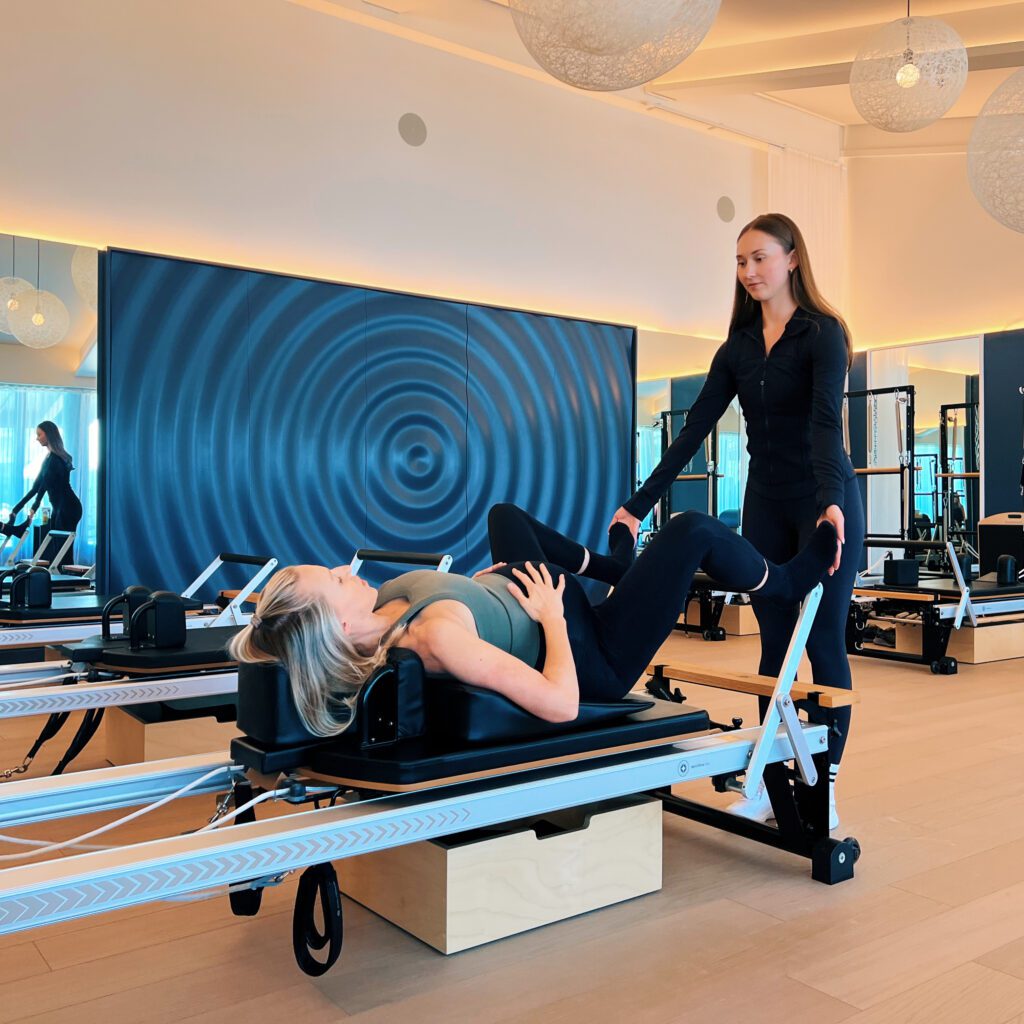
In the second trimester, it becomes difficult to lie on your back. Our soft wedge helps support many of the classic Pilates exercises such as footwork and feet in straps. This way, core connection can be maintained with comfort at a slight elevation. We even use the wedge for clients suffering from shoulder or neck injuries, or for those who are not able to lie down flat.
Footwork done on the back can mimic the famous squat position that helps train pregnant women for labor.
Diastasis recti is a separation of the rectus abodminus (ab muscles) at the linea alba. This common condition is caused by the stretching of the muscles during pregnancy and can cause the belly to feel soft and stick out months or years postpartum.
Fortunately, these muscles are highly elastic and diastasis recti can be repaired to close the separation through Pilates. Specifically, your Trainer will modify from deep flexion “C” curve work (like “curl up” motions) to more stability-based exercises like ab bracing and spinal articulation.
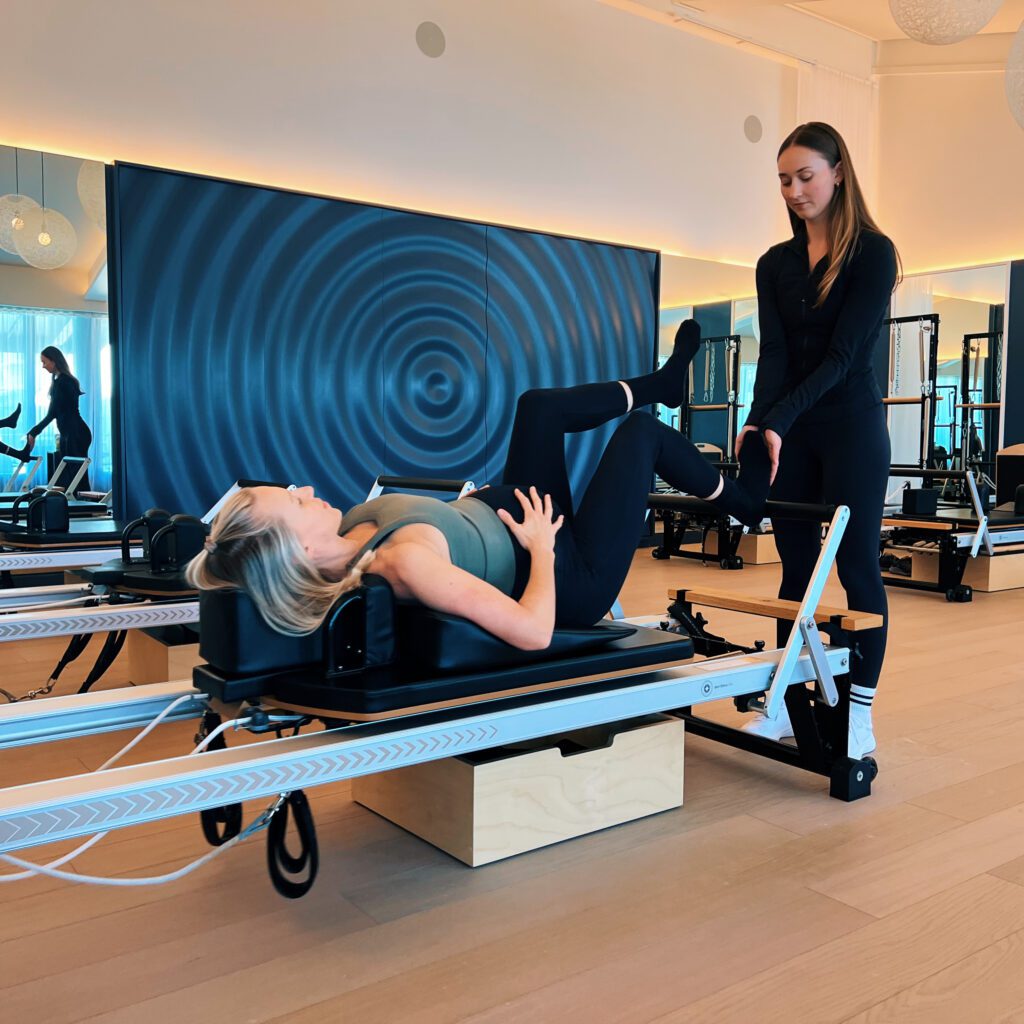
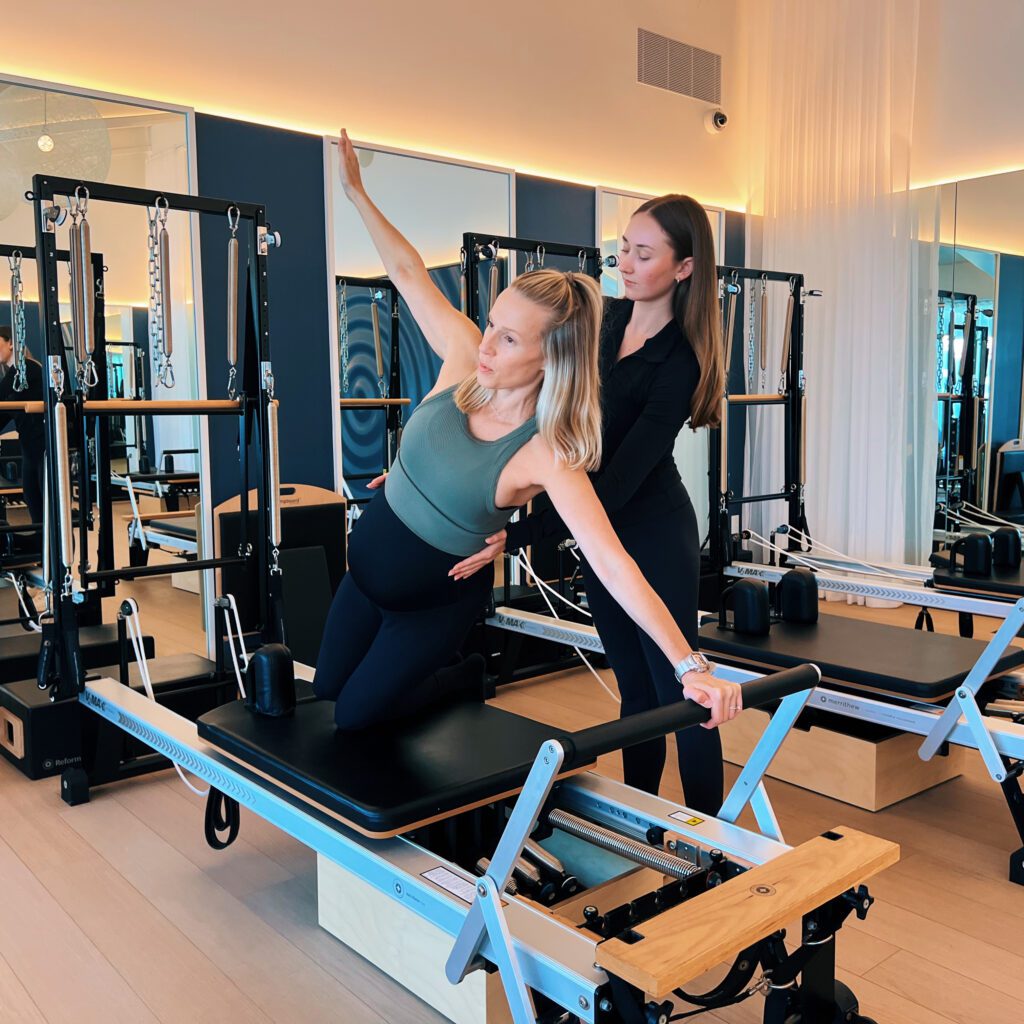
A key muscle that is safe to activate through Pilates during pregnancy, is the transverse abdominis. You can think of this muscle like the “belt” muscle that pulls your abs in and up. Side plank and gentle side sit ups can be excellent oblique work that will not compromise the rectus abdominals, therefore helping you avoid abdominal separation.
The Pilates reformer is an excellent tool for core training, while apparatus work (like the exercises done on the Cadillac and Wunda Chair) is especially great for pregnant clients because there is a lot more variety to get into positions that will support a growing belly.
On the Cadillac, side lying work is especially challenging and beneficial. On the Wunda Chair, seated footwork and press downs can help keep the posterior chain strong.
If you’re not familiar with all the different equipment used in Pilates, don’t worry! Our Pilates Trainers are highly skilled teachers and will guide you every step of the way. If you’re interested in watching a quick walkthrough of the Pilates reformer, click here to learn more from Woodside Pilates Trainer Heather Dillman.
POSTNATAL
After healing from birth, Pilates can help you build back strength in your core.
Whether you experience a vaginal birth or a cesarean section birth, your pelvic floor will be greatly compromised.
Pilates can aid in the recovery process by gently reintroducing movement, promoting healing and helping to address any muscle imbalances or weaknesses that may have developed. By maintaining a strong pelvic floor and overall body strength through Pilates, new mothers can improve their physical well-being and better manage the physical demands of caring for a newborn.

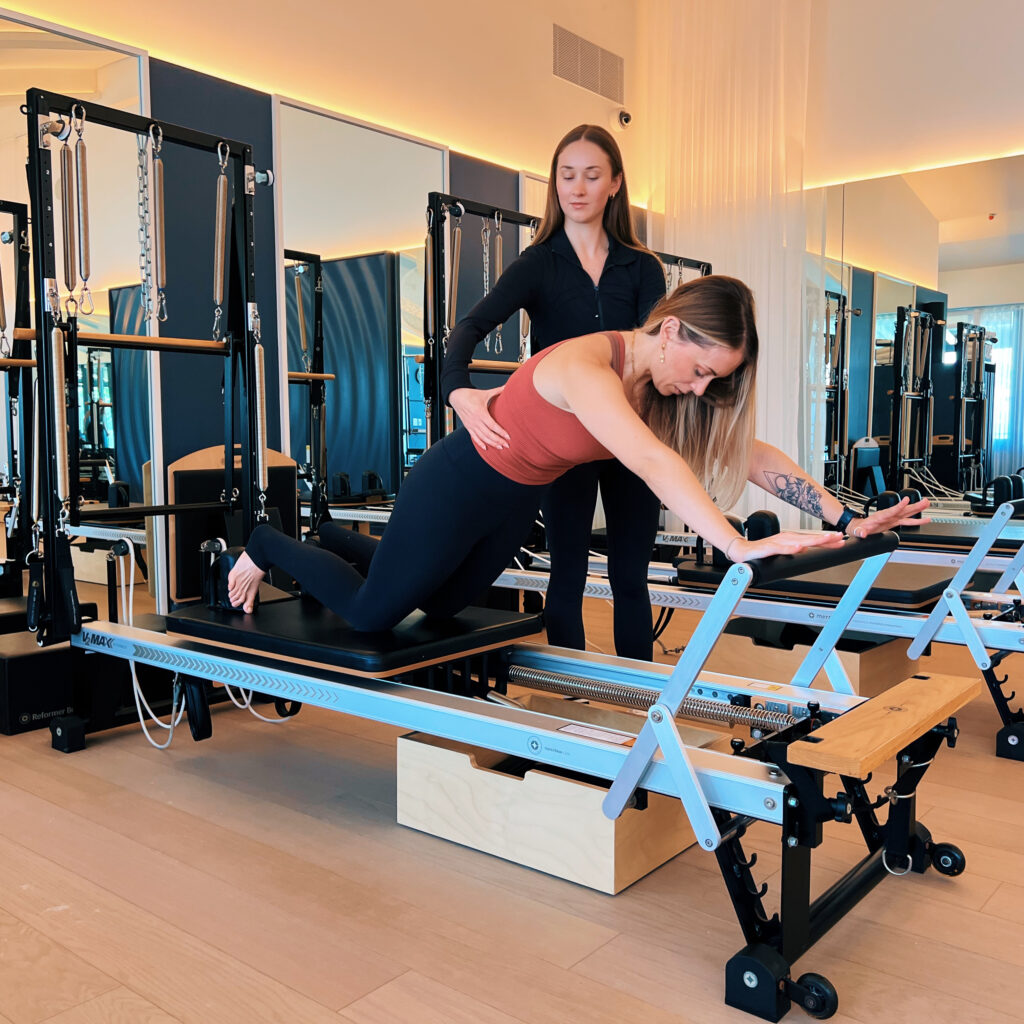
As we discussed above, diastasis recti is very prevalent in postpartum women and can cause the abs to feel weaker than before or during pregnancy.
Pilates Trainer Taylor Deeds recently experienced this condition credits her Pilates practice for closing the gap, restrengthening her abdominal walls and repairing her diastasis recti.
Challenges to the body in the postnatal period are common no matter your history. Though Taylor is both a yoga instructor and Pilates Trainer who works out regularly, she noticed how uncomfortable it was to stretch her tummy and abs after having her son. One of the things she loved about Pilates specifically is that it was an extremely gentle way of moving and stretching the scar tissue. Now eight months postpartum, she feels stronger than ever.
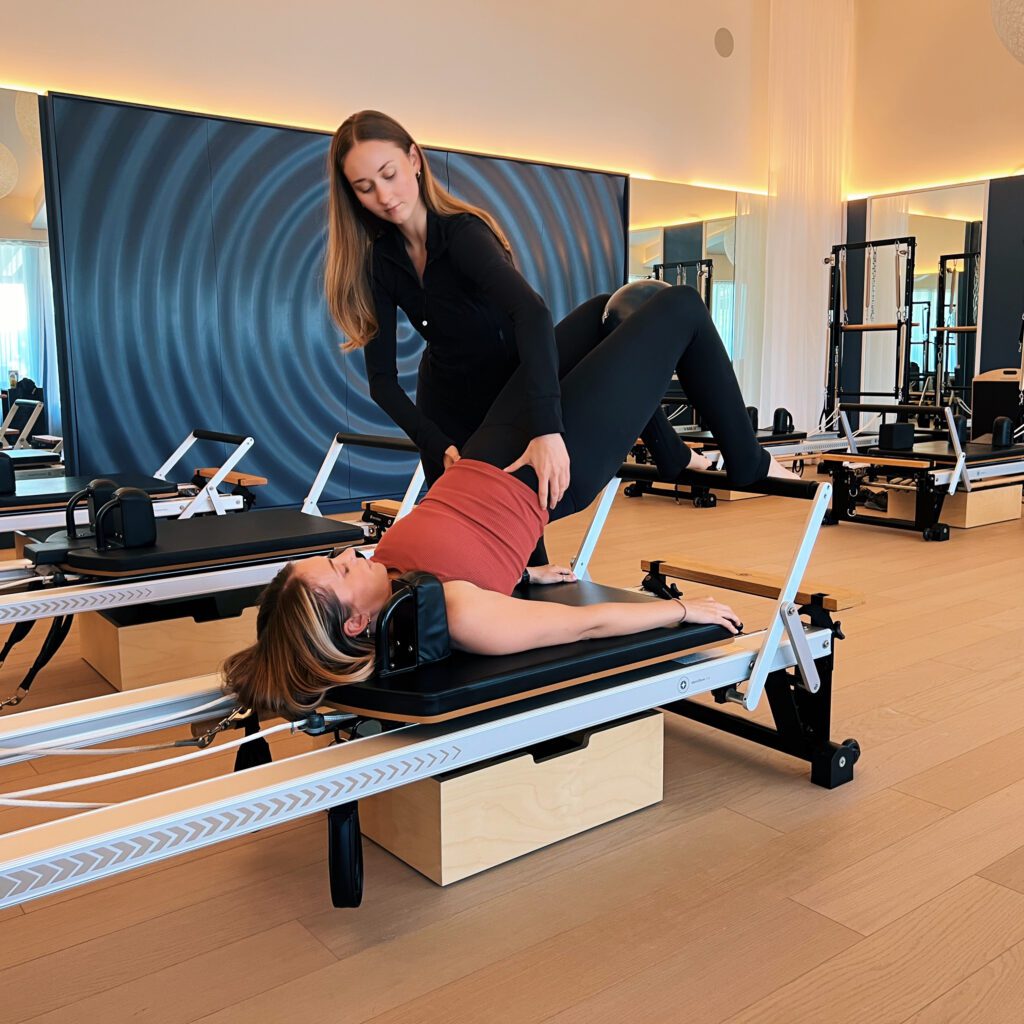
Our Pilates Trainers can help you incorporate Pilates into your pre- or postnatal fitness routine. To learn more click here or email us.
